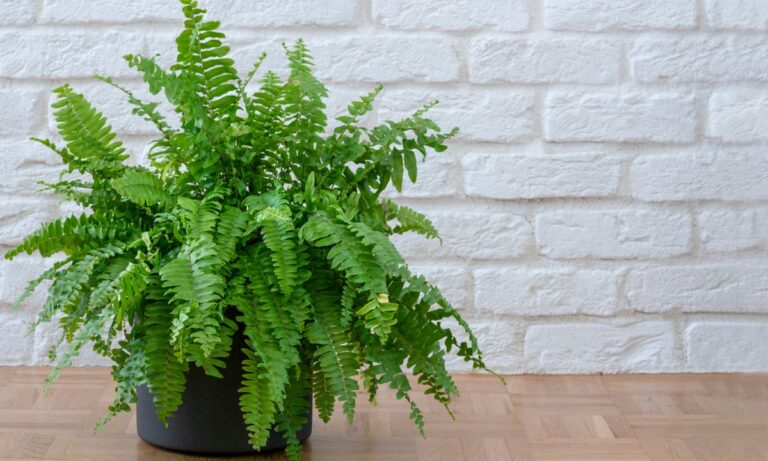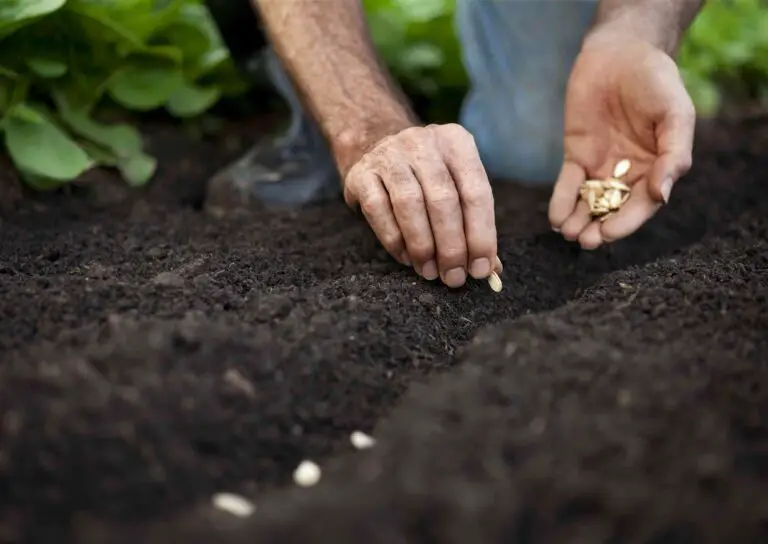DIY Potting Bench Plans: A guide to Build Your Own
Table of Contents
Benefits of Having a Potting Bench in Your Garden
A potting bench is an essential addition to any garden, providing numerous benefits that can elevate your gardening experience. One of the primary advantages of having a potting bench is the convenience it offers. With a dedicated workspace for all your gardening activities, you can avoid the hassle of constantly moving tools and materials from one place to another. This efficiency not only saves time but also keeps your garden organized and tidy, allowing you to focus on the task at hand.
Another significant benefit of a potting bench is its ergonomic design. By elevating the work surface to a comfortable height, it eliminates the need for bending or stooping during potting, planting, or seedling preparation. This ergonomic advantage not only reduces strain on your back and knees but also promotes better posture, ensuring that you can garden for longer periods without experiencing discomfort or fatigue. With a potting bench, you can indulge in your gardening passion for hours, nurturing your plants with ease and comfort.

Essential Tools and Materials for Building a Potting Bench
When it comes to building a potting bench, having the essential tools and materials on hand is crucial for a successful project. You’ll want to ensure that you have a well-equipped toolbox and access to quality supplies to make your bench sturdy and durable.
Some of the essential tools you’ll need include a power drill with various drill bits for making holes and attaching screws, a circular saw for cutting lumber to the correct size, a tape measure for precise measurements, and a level to ensure everything is aligned properly. Additionally, having a miter saw or a miter box and a hand saw will come in handy for making angled cuts.
In terms of materials, you’ll need a selection of lumber, such as pressure-treated or cedar boards, that are suitable for outdoor use and resistant to rot. Other materials you may need include screws or nails for assembling the bench, wood glue for added stability, and sandpaper for smoothing out any rough edges.
By having these essential tools and materials ready, you’ll be well-prepared to start building your own potting bench. With careful planning and attention to detail, your bench will soon be a valuable asset in your gardening endeavors.
Determining the Right Size and Design for Your DIY Potting Bench
Determining the right size and design for your DIY potting bench is an important consideration when embarking on this project. The size of your bench will depend on the available space in your garden and your specific needs. Consider how much surface area you require for potting plants, organizing tools, and storing supplies. Measure the dimensions of your chosen location to ensure the bench fits comfortably without obstructing other elements in your garden.
The design of your potting bench should also align with your gardening style and preferences. Think about the features that would be most beneficial for you. Would you benefit from additional shelves for storage? Would hooks and hangers be useful for hanging tools or hanging baskets? Consider including a sink or water source to conveniently perform gardening tasks. Additionally, think about the overall aesthetic and functionality of the design. Choose a design that not only complements the aesthetic of your garden but also provides practicality and ease of use.
Step-by-Step Guide to Constructing the Frame of Your Potting Bench
Constructing the frame of your potting bench is an important step in creating a sturdy and reliable workspace for your gardening needs. Before you begin, gather all the necessary tools and materials, such as a tape measure, saw, drill, screws, and a level, to ensure smooth progress throughout the construction process.
To start, measure and cut the lumber according to your desired dimensions for the frame. Make sure to double-check your measurements to ensure accuracy. Next, assemble the frame by attaching the pieces together using screws. Be mindful of aligning the corners and edges to maintain a square and level frame.
Once the frame is assembled, reinforce its stability by attaching diagonal braces at the corners. These braces will help distribute weight evenly and prevent any wobbling or instability. It is crucial to use screws or brackets specifically designed for this purpose to ensure a secure connection.
Creating a solid frame for your potting bench lays the foundation for a durable and functional workspace. With this step accomplished, you are ready to move on to the next phase of your DIY project, which may include adding a work surface, shelves, storage options, and other personalized touches that will enhance the functionality and aesthetic appeal of your potting bench.
Choosing the Right Type of Wood for Your Potting Bench
When it comes to choosing the right type of wood for your potting bench, it is important to consider its durability and resistance to weather elements. Cedar and cypress are two popular options that are known for their natural resistance to rot and decay. These types of wood are often used for outdoor furniture because they can withstand moisture and are less likely to warp or crack over time.
Another factor to consider is the sustainability of the wood. Opting for sustainably sourced wood, such as bamboo or reclaimed wood, can help reduce the environmental impact of your project. Bamboo is a fast-growing plant that can be harvested sustainably, making it an eco-friendly choice. Reclaimed wood, on the other hand, is salvaged from old structures and given a new life, adding a unique and rustic touch to your potting bench.
Ultimately, the type of wood you choose will depend on your personal preferences, budget, and the overall aesthetic you want to achieve. It is worth researching and comparing different wood types to find the one that best suits your needs and aligns with your values of sustainability. By carefully selecting the right type of wood, your potting bench will not only serve as a functional workspace but also as a beautiful addition to your garden.
Tips for Properly Measuring and Cutting Wood for Your Project
When embarking on a DIY project like building a potting bench, one of the most important steps is to ensure that you properly measure and cut the wood for your project. Taking accurate measurements and making precise cuts will not only result in a more professional-looking finished product but will also make the assembly process much smoother.
To begin, gather all the necessary tools for measuring, including a tape measure, a combination square, and a carpenter’s pencil. When measuring, be sure to measure twice and cut once to avoid wasted materials. Use the tape measure to determine the length and width of each piece of wood, and mark these measurements clearly with the carpenter’s pencil. The combination square can be used to ensure that your cuts are perfectly perpendicular. Always use a sharp saw and take your time to make clean, straight cuts that match your markings. Remember, precision is key when working with wood, so measure carefully and cut with confidence.
Accurate measurements and precise cuts are crucial in the construction of a potting bench. By following these tips, you can avoid common mistakes and ensure that your project is a success. Next, we will discuss the process of assembling the legs and work surface of your potting bench, bringing you one step closer to the garden of your dreams.

Assembling the Legs and Work Surface of Your Potting Bench
Assembling the legs and work surface of your potting bench is an essential step in creating a sturdy and functional workspace for your gardening needs. To ensure a secure and stable structure, it is important to follow the proper assembly instructions and use the right tools and materials.
First, gather all the necessary components, including the legs, work surface, and any additional support pieces. Lay them out in an organized manner for easy access during the assembly process. It is also advisable to have a clear and spacious work area to maneuver the pieces effectively.
Start by attaching the legs to the work surface using appropriate screws or fasteners. Make sure to align each leg properly with the corners of the work surface and use a level to ensure they are perfectly vertical. It is crucial to firmly attach the legs to prevent any wobbling or instability.
Next, reinforce the legs and work surface by adding bracing pieces or crossbeams along the underside of the bench. These additional supports will contribute to the overall strength and durability of your potting bench. Again, secure them tightly with screws or fasteners, making sure they are flush against the legs and work surface.
By taking the time to assemble the legs and work surface correctly, you are setting the foundation for a reliable and functional potting bench. A well-constructed structure will not only provide a stable work area but also contribute to your efficiency and productivity while gardening.
Adding Shelves and Storage Options to Your Potting Bench
One of the key features that sets a potting bench apart from a regular table is its storage options. Adding shelves and storage compartments to your potting bench not only helps keep your gardening tools organized but also maximizes the efficiency and functionality of your workspace.
When it comes to choosing the right shelves and storage options for your potting bench, consider your specific gardening needs. If you have a large collection of small tools, such as hand trowels, pruners, and seed packets, installing narrow shelves with dividers can help keep everything neatly in place. Alternatively, if you prefer to have your tools within easy reach, consider adding hooks or pegboard panels to hang them on the sides of your potting bench. This allows for quick and convenient access while still keeping your workspace clutter-free.
Remember, a well-designed potting bench should not only provide ample storage but also allow you to customize the space based on your unique gardening requirements. By carefully considering the types and sizes of shelves and storage options that will best accommodate your needs, you can create a potting bench that is both practical and visually appealing.
Enhancing the Functionality of Your Potting Bench with Hooks and Hangers
Hooks and hangers are valuable additions to any potting bench, as they greatly enhance its functionality. These simple yet versatile tools provide convenient storage solutions, allowing you to keep your gardening tools and supplies organized and easily accessible. By incorporating hooks and hangers into your potting bench design, you can maximize space utilization and streamline your gardening tasks.
One way to make the most of hooks and hangers is by installing them on the sides or back of your potting bench. This allows you to hang various tools such as trowels, pruners, gloves, and aprons, keeping them within arm’s reach while you work. Additionally, larger hooks can hold lightweight buckets or baskets, providing storage for items like seeds, plant labels, and small pots. By utilizing these hooks and hangers, you can efficiently utilize your workspace and minimize clutter, creating a more organized and enjoyable gardening experience.
In addition to tool storage, hooks and hangers can also be used to hang pots and hanging baskets. This allows you to grow a variety of plants and herbs vertically, conserving valuable bench space for other gardening tasks. Hanging pots and baskets can be easily accessed and tended to, providing optimal growing conditions for your plants. Not only does this enhance the visual appeal of your potting bench, but it also increases the yield of your garden by maximizing the use of available space. So, consider incorporating hooks and hangers into your potting bench to elevate its functionality and efficiency.

Tips for Sanding and Finishing Your Potting Bench for Longevity
Sanding and finishing your potting bench is a crucial step in ensuring its longevity and durability. By taking the time to properly prepare and protect the wood, you can extend the lifespan of your bench and make it more resistant to weathering and wear.
Start by sanding the surfaces of your potting bench with a medium-grit sandpaper. This will smooth out any imperfections and create a clean surface for finishing. Be sure to sand in the direction of the wood grain to avoid scratching or damaging the surface.
Once you have completed the sanding, it’s time to apply a protective finish. There are several options available, including varnish, polyurethane, or even outdoor paint. Choose a finish that is specifically designed for outdoor use and provides protection against moisture, UV rays, and pests. Apply the finish according to the manufacturer’s instructions, making sure to cover all surfaces evenly. Leave the bench to dry completely before using it again. Taking these steps will go a long way in preserving the beauty and functionality of your potting bench for years to come.
Painting or Staining Your Potting Bench: Choosing the Right Finish
When it comes to painting or staining your potting bench, choosing the right finish is crucial for both aesthetic appeal and longevity. There are a few factors to consider when making this decision. Firstly, you’ll want to think about the climate in which your bench will be situated. If your garden experiences harsh weather conditions, such as excessive heat or heavy rainfall, you’ll want to opt for a finish that offers maximum protection against these elements. A high-quality exterior paint or a weather-resistant stain can help shield your potting bench from potential damage caused by UV rays, moisture, and temperature fluctuations.
Another important factor to consider is the overall look and feel you wish to achieve. If you prefer a more natural appearance that highlights the beauty of the wood grain, staining may be the ideal option for you. Stains come in various shades and levels of transparency, allowing you to find the perfect match for your desired aesthetic. On the other hand, if you’re looking to add a pop of color or create a cohesive theme in your garden, painting your potting bench can be a great choice. The versatility of paint allows you to experiment with different hues and even customize your bench to complement your existing outdoor decor.
Ultimately, the choice between painting or staining your potting bench boils down to personal preference and the specific needs of your garden. Whichever finish you choose, be sure to select a high-quality product that is designed for exterior use, as this will ensure the durability and longevity of your bench. Taking the time to properly finish your potting bench will not only enhance its appearance but also protect it from the elements, allowing you to enjoy your gardening activities for years to come.

Installing a Sink or Water Source for Convenient Gardening Tasks
Installing a sink or water source in your garden can greatly enhance the convenience and efficiency of your gardening tasks. Whether you’re potting plants, washing vegetables, or filling watering cans, having easy access to water right at your potting bench can save you time and effort.
When considering the installation of a sink or water source, it’s important to choose the right location in your garden. Ideally, the sink should be situated near your potting bench, allowing for seamless transitions between tasks. Additionally, it’s crucial to ensure that your water source is easily accessible and can be properly drained to prevent any water accumulation or damage.
Creative Ideas for Personalizing and Decorating Your Potting Bench
Personalizing and decorating your potting bench is a fun and creative way to make it truly your own. Not only does it add a personal touch to your gardening space, but it can also enhance the functionality and overall appeal of your bench. Here are a few creative ideas to inspire you:
| Idea | Description |
|---|---|
| Vintage Charm | Incorporate vintage elements like old watering cans, rustic tools, and weathered pots. Hang an antique sign or use vintage crates as storage for gardening supplies. |
| Herb Garden Station | Utilize small pots or mason jars to grow herbs directly on the potting bench. Label each herb with cute signage. Add a small chalkboard for jotting down notes or reminders. |
| Fairy Garden Oasis | Create a miniature fairy garden on a section of the bench. Use tiny plants, miniature furniture, and whimsical accessories to bring the enchantment to life. |
| Coastal Retreat | Paint the bench in calming coastal colors like blues and whites. Decorate with seashells, driftwood, and nautical-themed items for a beach-inspired feel. |
| Succulent Showcase | Showcase a variety of succulents in unique containers like teacups, mason jars, or terrariums. Arrange them on different levels of the bench for visual interest. |
| Upcycled Delight | Repurpose old furniture or salvaged materials to construct your potting bench. Use recycled wood, crates, or even an old sink to add character and sustainability. |
| Vertical Garden Wall | Install a trellis or vertical garden system on the back of the potting bench. Hang pots or planters filled with trailing vines or flowers for a space-saving green display. |
| Bohemian Paradise | Layer colorful textiles like rugs or scarves underneath the bench. Hang dreamcatchers, macramé plant hangers, and eclectic artwork for a boho-chic vibe. |
| Birdwatcher’s Haven | Hang birdhouses, feeders, and baths nearby to attract feathered friends. Incorporate natural elements like branches and rocks to create a welcoming environment for birds. |
| Seasonal Showcase | Decorate the potting bench according to the seasons. For example, adorn it with pumpkins and gourds in the fall, or with festive lights and ornaments during the holidays. |
Remember, personalizing and decorating your potting bench should not only reflect your personal style but also prioritize functionality and durability. Consider using weather-resistant materials and finishes to ensure that your creative additions withstand the outdoor elements and maintain their charm for years to come.
Maintenance and Care Tips to Keep Your Potting Bench in Top Shape
Maintenance and care are essential to ensure that your potting bench remains in top shape and continues to serve its purpose effectively. By following a few simple tips, you can prolong the lifespan of your potting bench and enjoy its benefits for years to come.
1. Regular Cleaning: Keeping your potting bench clean is crucial for its longevity. After each use, make sure to remove any debris, soil, or plant residues from the work surface and shelves. Use a mild detergent or a mix of water and vinegar for an eco-friendly cleaning solution. Avoid using harsh chemicals that can damage the wood or contaminate plants.
2. Protect Against the Elements: If your potting bench is placed outdoors, exposure to the elements can degrade it over time. Consider using a waterproof cover to protect it from rain, snow, and excessive sunlight. This will prevent the wood from warping, rotting, or fading. Additionally, if possible, place your potting bench under a shade or in a covered area to further shield it from the weather.
Remember, proper maintenance is key to keep your potting bench sturdy and functional. By incorporating these tips into your routine, you’ll be able to enjoy a well-maintained potting bench that supports your gardening endeavors efficiently.

Budget-Friendly Alternatives to Building Your Own Potting Bench
Budget-friendly alternatives to building your own potting bench can be a great option for gardeners on a tight budget or those who prefer to repurpose items they already have. One option is to use an old table or workbench as a makeshift potting area. Simply clean it thoroughly, sand down any rough surfaces, and apply a protective finish to ensure durability.
Another cost-effective alternative is to repurpose a sturdy bookshelf or shelving unit into a potting station. By adding a solid work surface on top and attaching hooks or hangers for tools and storage, you can transform an existing piece of furniture into a functional potting area. This not only saves money but also makes use of items you may already have on hand.
When considering budget-friendly alternatives, it’s important to prioritize functionality and durability. Ensure that the chosen surface is sturdy enough to withstand the rigors of potting, watering, and general gardening tasks. Additionally, make sure the materials used are weather-resistant and can withstand exposure to the elements if your potting bench will be used outdoors.
By thinking creatively and repurposing items, you can create a budget-friendly potting bench that meets your gardening needs without breaking the bank. Whether it’s an old table or a repurposed bookshelf, these alternatives allow you to enjoy the benefits of a potting bench without the hefty price tag.
Inspiring Examples and Ideas for Using Your DIY Potting Bench in the Garden.
Inspiring Examples and Ideas for Using Your DIY Potting Bench in the Garden:
1. Seed Starting Station: A potting bench is the perfect space to start your seeds and nurture young plants. With its ample work surface and storage options, you can easily set up trays of seeds, pots, and soil. The raised height of the bench ensures comfortable access, allowing you to tend to your seedlings without straining your back. Additionally, having shelves nearby provides handy storage for seed packets, labels, and other seed-starting essentials. Transform your potting bench into a thriving seed starting station and watch your garden flourish from the beginning stages.
2. Plant Repotting Zone: As your plants grow, they may need to be repotted into larger containers to accommodate their expanding roots. A potting bench provides an ideal area for this task. Its spacious work surface allows you to spread out your materials, preventing soil spills and messes. The integrated storage options enable you to organize your pots, potting soil, and tools, making the repotting process a seamless and efficient experience. With a dedicated plant repotting zone on your potting bench, you can give your plants the space they need while keeping your garden tidy and well-maintained.
What are some additional benefits of having a potting bench in your garden?
In addition to providing a dedicated workspace for gardening tasks, a potting bench can also help keep your garden organized, improve efficiency in planting and transplanting, and reduce strain on your back and knees by providing a comfortable working height.
Are there any alternative materials that can be used to build a potting bench?
Yes, if you prefer not to use wood, you can consider using materials such as metal, plastic, or even repurposed items like old tables or dressers to create a unique potting bench for your garden.
How can I personalize and decorate my potting bench?
You can personalize your potting bench by adding decorative elements such as mosaic tiles, stenciled designs, or even using different colors of paint or stain. Additionally, you can add hooks or hangers to hang small gardening tools or incorporate potted plants or flowers to enhance its appearance.
How should I maintain and care for my potting bench?
To keep your potting bench in top shape, regularly clean it with mild soap and water to remove dirt or debris. Apply a protective finish, such as a waterproof sealant or outdoor wood varnish, to prevent damage from moisture. Also, periodically inspect and tighten any loose screws or bolts to ensure stability.
Are there any cost-effective alternatives to building my own potting bench?
Yes, if you’re on a budget or prefer not to build your own potting bench, you can explore options like repurposing old furniture, using a sturdy table or workbench as a makeshift potting area, or purchasing a pre-made potting bench from a garden supply store.
Can I use my potting bench for purposes other than gardening?
Absolutely! Your potting bench can be versatile and used for various purposes. It can serve as a serving or buffet table during outdoor gatherings, a workspace for other DIY projects, or even as a display area for potted plants or home decor items.

Beck Wakeford is a dedicated writer at SouthElMonteHydroponics, with a fervent enthusiasm for agriculture and technological innovation. Armed with a degree in Agricultural Engineering from a leading university, Beck specializes in hydroponic systems design, automation, and optimization. Their passion for merging traditional farming with cutting-edge technology drives them to explore novel solutions for sustainable food production. Beck’s expertise and keen interest in the intersection of engineering and agriculture make them a valuable asset in the quest for efficient and eco-friendly farming practices. Through their writing, Beck aims to inspire others to embrace the potential of hydroponics in shaping a more sustainable future.





